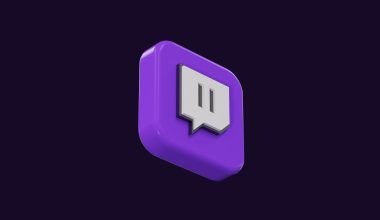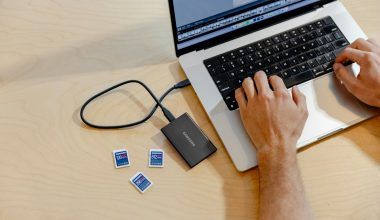The music industry has evolved dramatically, and now, you don’t need a record label to monetize your music on all streaming platforms. Independent artists are proving daily that success is possible with the right tools and strategies. Whether you’re just starting or looking to boost your existing income streams, this guide will help you navigate the process step by step.
Why Monetizing Music Independently is Possible Today
Gone are the days when record labels controlled the industry. Streaming platforms like Spotify, Apple Music, YouTube Music, and Amazon Music have opened doors for artists to reach global audiences directly. These platforms allow musicians to upload, distribute, and earn revenue without intermediaries. The internet has also introduced tools like social media, crowdfunding, and fan subscriptions, giving artists unprecedented control over their careers.
So, how can you tap into this potential? Let’s break it down.
Building a Solid Foundation for Monetizing Your Music
Before you dive into distributing your tracks, ensure your foundation is solid. Here’s how you can prepare:
1. Create High-Quality Music
Your music needs to stand out. Invest in good recording equipment or book studio time to ensure professional-quality sound. High-quality tracks are more likely to attract listeners and generate streams.
2. Register Your Music
To protect your rights and ensure you receive royalties, register your music with a performing rights organization (PRO) like ASCAP, BMI, or PRS. This step is crucial for tracking plays and earning performance royalties.
3. Get Your ISRC Codes
International Standard Recording Codes (ISRCs) are essential for tracking your songs across streaming platforms. Many distribution services provide these codes for free when you upload your tracks.
Choosing the Right Distribution Service
Distribution services act as the middleman between you and streaming platforms. These services upload your music to platforms like Spotify, Apple Music, and Tidal. Some popular options include:
- DistroKid: Affordable with unlimited uploads.
- Deliver My Tune: Offers a pay-per-release model.
- CD Baby: Great for one-time payments and distribution.
- AWAL: Ideal for artists with existing fan bases.
When choosing a distributor, compare their pricing, royalty rates, and additional features like promotional tools and analytics.
Promoting Your Music to Maximize Earnings
Distributing your music is only the first step. To monetize effectively, you need to promote your tracks and drive streams. Here are some strategies:
Social media platforms like Instagram, TikTok, and Twitter are invaluable for independent artists. Share snippets of your songs, behind-the-scenes content, and engage with fans. Use trending hashtags and challenges to increase your reach.
2. Create a YouTube Channel
YouTube isn’t just a video platform—it’s also a music discovery hub. Upload lyric videos, live performances, and even tutorials related to your music. Monetize your channel through ads, memberships, and fan contributions.
3. Build a Fan Base Through Email Marketing
Email marketing may sound old-school, but it’s one of the most effective ways to keep fans engaged. Use platforms like Mailchimp to send updates about new releases, tour dates, and exclusive content.
4. Collaborate With Influencers
Reach out to influencers who align with your music genre. A simple post or story featuring your track can expose your music to thousands of new listeners.
Monetizing Beyond Streaming Revenue
While streaming revenue is a significant income source, it’s not the only way to monetize your music. Diversify your earnings with these methods:
1. Sell Merchandise
Design and sell merchandise like t-shirts, hoodies, and posters. Platforms like Teespring or Printful make it easy to set up an online store.
2. Crowdfund Your Projects
Crowdfunding platforms like Patreon or Kickstarter allow fans to support your work financially. Offer exclusive perks like early access to music or private live streams to incentivize contributions.
3. License Your Music
Submit your tracks to licensing platforms like Musicbed or Songtradr. These platforms connect artists with filmmakers, advertisers, and content creators looking for music.
4. Perform Live (In-Person or Online)
Live performances are not limited to concerts. Platforms like Twitch and Stageit enable artists to perform virtually and earn through ticket sales or tips.
Analyzing Your Performance
Once your music is live, it’s important to monitor its performance. Use analytics tools provided by streaming platforms to track your streams, audience demographics, and revenue. Platforms like Spotify for Artists and Apple Music for Artists offer valuable insights to help you refine your strategy.
Staying Consistent and Persistent
Monetizing your music independently requires consistency and patience. Focus on building a strong connection with your audience and releasing music regularly. Keep experimenting with promotional strategies and learn from your analytics to see what resonates with your listeners.
Conclusion
Monetizing your music on all streaming platforms without a label is not only possible but also empowering. By taking control of your career, you can create a sustainable income while staying true to your artistic vision. From choosing the right distribution service to diversifying your revenue streams, the opportunities are endless.
Now is the time to take charge of your music journey. Start today, and watch as your passion turns into a thriving career.
For further reading, explore these related articles:
- Revving Up: A Dive into the Best Tracks from Fast Six
- A Musical Journey Through Black Eyed Peas Albums
- Everything You Need to Know About ISRC Codes for Bands
For additional resources on music marketing and distribution, visit DMT Records Private Limited.






